
The International Union for Conservation of Nature (IUCN) Red List of Threatened Species, also known as the IUCN Red List or Red Data Book, founded in 1964, is an inventory of the global conservation status and extinction risk of biological species. A series of Regional Red Lists, which assess the risk of extinction to species within a political management unit, are also produced by countries and organizations.

Sardine and pilchard are common names for various species of small, oily forage fish in the herring suborder Clupeoidei. The term 'sardine' was first used in English during the early 15th century; a somewhat dubious etymology says it comes from the Italian island of Sardinia, around which sardines were once supposedly abundant.

The rufous-crowned sparrow is a small American sparrow. This passerine is primarily found across the Southwestern United States and much of the interior of Mexico, south to the transverse mountain range, and to the Pacific coast to the southwest of the transverse range. Its distribution is patchy, with populations often being isolated from each other. Twelve subspecies are generally recognized, though up to eighteen have been suggested. This bird has a brown back with darker streaks and gray underparts. The crown is rufous, and the face and supercilium are gray with a brown or rufous streak extending from each eye and a thick black malar streak.

An IUCN Red List Critically Endangered species is one that has been categorized by the International Union for Conservation of Nature as facing an extremely high risk of extinction in the wild. As of December 2023, of the 157,190 species currently on the IUCN Red List, 9,760 of those are listed as Critically Endangered, with 1,302 being possibly extinct and 67 possibly extinct in the wild.
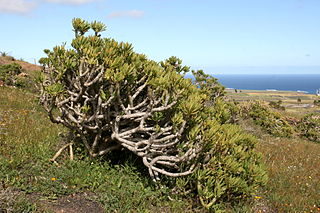
Kleinia neriifolia, known in Spanish as verode or berode, is a species of flowering plant in the daisy family (Asteraceae). It is endemic to the Canary Islands. It was formerly named Senecio kleinia.

Hibiscus scottii is a species of flowering plant in the family Malvaceae. It is found only in Yemen. Its natural habitat is subtropical or tropical dry forests.
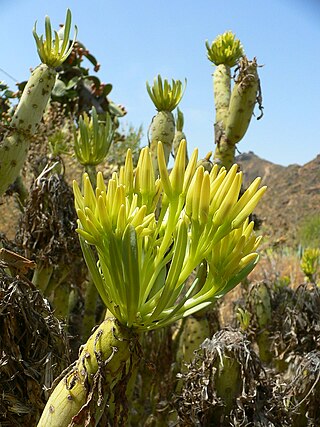
Kleinia is a genus of flowering plants in the sunflower family. Kleinia contains around 50 species and is distributed from Morocco and the Canary Islands, throughout Sub-Saharan Africa, the Arabian Peninsula, South Asia and Indochina. It is closely related to the genus Senecio but is distinguished primarily by having succulent stems or leaves.
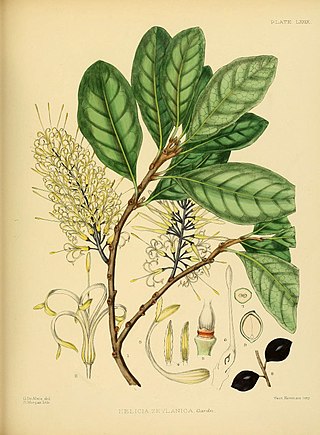
Helicia is a genus of 110 species of trees and shrubs, constituting part of the plant family Proteaceae. They grow naturally in rainforests throughout tropical South and Southeast Asia, including India, Sri Lanka, Indochina, Peninsular Malaysia to New Guinea and as far south as New South Wales.

Kleinia amaniensis is a species of flowering plant in the genus Kleinia and the family Asteraceae.
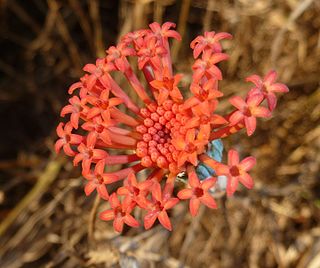
Kleinia fulgens is a species of flowering plant in the genus Kleinia and the family Asteraceae native to Southern Africa, which used to be of the genus Senecio. It is native to the countries Angola, Mozambique, Swaziland, Zambia, and Zimbabwe, as well as to KwaZulu-Natal and the Northern Provinces in South Africa.

Kleinia madagascariensis is a species of flowering plant in the genus Kleinia and the family Asteraceae and is endemic to Madagascar.
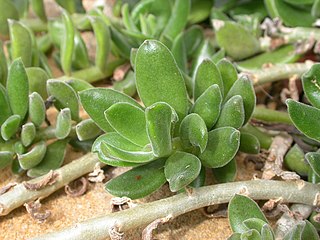
Kleinia implexa is a species of flowering plant in the genus Kleinia and family Asteraceae which was previously considered to be a species of Senecio.

Kleinia petraea is a species of flowering plant in the genus Kleinia and family Asteraceae which was previously considered to be a species of Senecio. Native to Kenya and Tanzania, it is colloquially known as creeping jade, trailing jade or weeping jade due to its resemblance to the unrelated Jade plant.
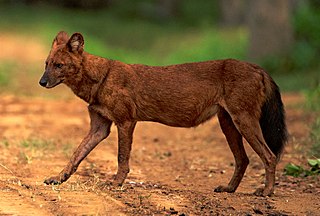
An endangered species is a species that is very likely to become extinct in the near future, either worldwide or in a particular political jurisdiction. Endangered species may be at risk due to factors such as habitat loss, poaching, invasive species, and climate change. The International Union for Conservation of Nature (IUCN) Red List lists the global conservation status of many species, and various other agencies assess the status of species within particular areas. Many nations have laws that protect conservation-reliant species which, for example, forbid hunting, restrict land development, or create protected areas. Some endangered species are the target of extensive conservation efforts such as captive breeding and habitat restoration.

Myrtus communis, the common myrtle or true myrtle, is a species of flowering plant in the myrtle family Myrtaceae. It is an evergreen shrub native to southern Europe, North Africa, Western Asia, Macaronesia, and the Indian Subcontinent, and also cultivated.

Diota rostrata is a species of moth of the subfamily Arctiinae first described by Wallengren in 1860. It is found in South Africa, Eswatini, Zimbabwe, Kenya and Ethiopia.

Tabernaemontana pandacaqui, known as windmill bush and banana bush, is a species of plant in the dogbane family Apocynaceae.
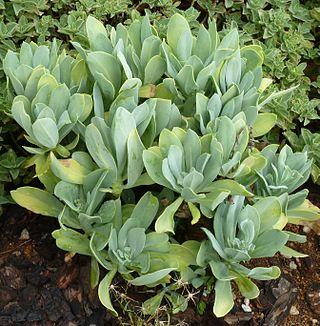
Kleinia galpinii is a species of flowering plant in the family Asteraceae. It is native to Zimbabwe, Eswatini, and South Africa's KwaZulu-Natal and Northern Provinces. The species name commemorates E. E. Galpin. It has gained the Royal Horticultural Society's Award of Garden Merit as a warm temperate greenhouse ornamental.
Patricia Halliday was an English botanist and Illustrator who worked at Kew Gardens.



















